In: Curators Picks
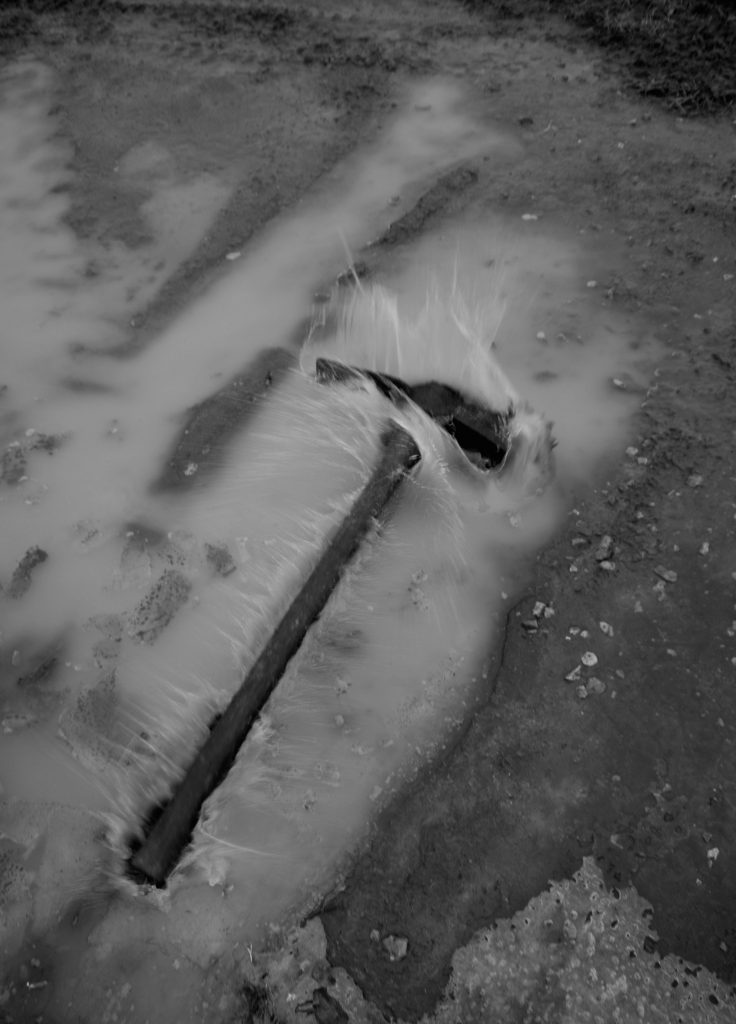
Adrianna Ault & Raymond Meeks | Ohio Farm Auction
December 11, 2023Adrianna Ault & Raymond Meeks | Ohio Farm Auction
The crops we grew last summer weren’t enough to pay the loans
Couldn’t buy the seed to plant this spring and the Farmers’ Bank foreclosed
Called my old friend Schepman up, to auction off the land
He said, “John it’s just my job and I hope you understand”
Hey, calling it your job ol’ hoss, sure don’t make it right
But if you want me to I’ll say a prayer for your soul tonight
(John Mellencamp, Rain on the Scarecrow)
One generation passeth away, and another generation cometh: but the earth abideth for ever. (Ecclesiastes 1:4, KJV)
There’s a memento mori quality to the scenes from the Ohio Farm Auction series. This may be an interpretation informed by several of the other bodies of work by Adrianna Ault (such as her series Levee which led me to the collaborative Ohio Farm Auction series), that are permeated by a sense of mortality and remembrance, as expressed in her writings about those images.
Though these images are not completely empty of people, the more striking and – unsurprisingly – starker moments that stay with you have no figures within them, though their absence and implication is powerful. The line I quote above, in response to this work came to mind immediately upon seeing the Township photos. Mellencamp’s album was a series of laments for a way of life lost (perhaps taken away or relinquished), as the world moves on (this last being closest, I feel, to the artists’ position here, with a gentle consideration of family history and generational change. Township reads more about releasing than resistance..)
The biblical quote came to me in a more indirect manner. Having recently read George Stewart’s post apocalyptic book Earth Abides (from 1949, so it ages poorly, in many ways – or this is perhaps a corolary to the ‘change’ implicit in the story presented in Ohio Farm Auction, of a time to gather and a time to discard), the ideas, again, of what is lost and our – humanity’s – place in the larger narrative of the earth was a further consideration when I engaged with these photographs…
The words of Adrianna Ault, speaking of this collaboration with Meeks (one of a number they’ve done) :
“These photographs were taken one February day in a rural township in Ohio. My partner, Raymond Meeks, and I photographed and watched as all the possessions of my family’s farm was auctioned to the highest bidder. Photographing served as a testimony to the life and work of over one hundred years of farming in my family. This work was published as a collaboration with Tim Carpenter and Brad Zellar in the book Township published by TIS books and later nominated for the 2018 Kassel Fotobookfestival Award.”
That collection of words and photographs has been described as a “careful deliberation on transience and the ultimate meaning of a way of life in the Midwest.”
More of Ault’s work can be seen here and more of Meek’s work can be seen here.
~ Bart Gazzola
Read More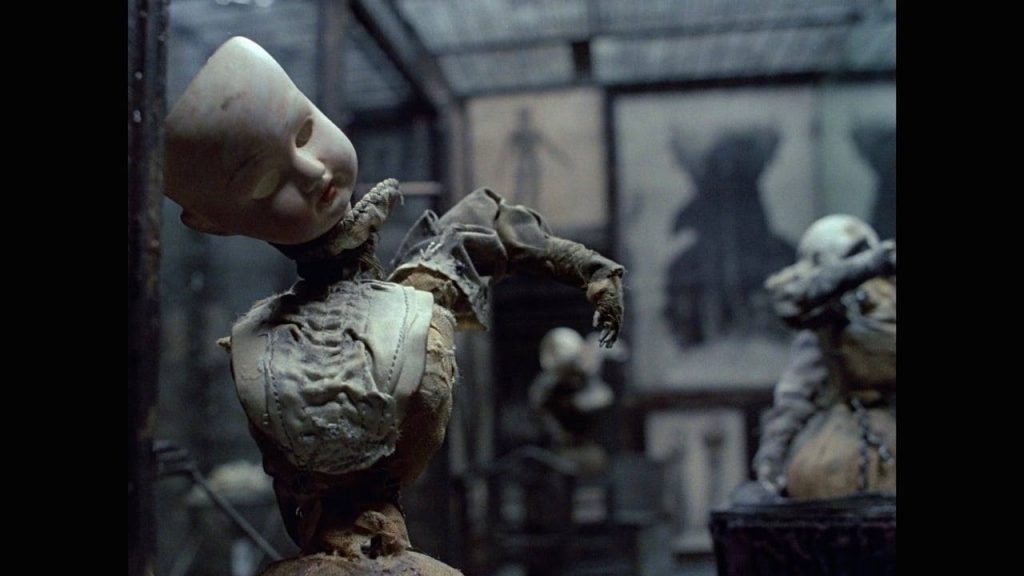
The Brothers Quay | Street of Crocodiles | 1986
November 27, 2023The Brothers Quay | Street of Crocodiles | 1986
The Street of Crocodiles was a concession of our city to modernity and metropolitan corruption. The misfortune of that area is that nothing ever succeeds there, nothing can ever reach a definite conclusion. Obviously, we were unable to afford anything better than a cardboard imitation, a photo montage cut out from last year’s mouldering newspapers. Obviously, we were unable to afford anything better.
(Bruno Schulz, The Street of Crocodiles, also known as The Cinnamon Shops, 1934)
Inspired by the short story by Bruno Schulz (The Street of Crocodiles) from a book of collected stories, Timothy and Stephen Quay – well known as The Brothers Quay or The Quay Brothers – decided that ‘rather than literally representing the childhood memoirs of Schulz, the animators [would use] the story’s mood and psychological undertones as inspiration for their own creation.’
It’s a relatively short film (approximately twenty minutes) but its brevity doesn’t prevent this work by The Brothers Quay from having a haunting impact on the viewer. There’s something about stop action animation that is unsettling, in itself (perhaps that these are ‘dolls’ that ‘pervert’ our sense of ourselves, in the manner of Hans Bellmer, dark dreams given corporeal forms) and the dark scenes (like degraded wastelands populated by equally damaged characters) where the brothers’ adaptation – or reimagination – of Schulz’ story plays out only augments this unease. Schulz’ words echo in the space : In that city of cheap human material, no instincts can flourish, no dark and unusual passions can be aroused.
Schulz (1892 – 1942) was a Jewish Polish writer, fine artist, literary critic and art teacher, considered among the great Polish – language prose stylists of the 20th century. Many of his works were ‘lost’ – as in destroyed by the nazis, the ones from the previous century – during the Holocaust, and Schulz died when shot by one of those butchers while walking home with a loaf of bread…..
I was unaware of this history when I first saw the short decades ago, but rewatching it with this knowledge only adds more dark nuance to the tableaux that the brothers have ‘built’ on the words and worlds of Schulz. The accompanying music by Leszek Jankowski is alternately jarring and mournful.
A somewhat simplistic synopsis of this work – or perhaps a banal lure to the unwary (from here) : Inside a box full of curio, a puppet who is recently freed from his strings explores a dusty and forlorn commercial area. The explorer becomes ensnared into miniature tailor shop by baby-faced dolls.
Several excerpts of Street of Crocodiles can be enjoyed here and here.
More information about the Brothers Quay – including links to many of their works – can be seen here. If you remember the film Frida (2002), you may be familiar with how the Brothers Quay are responsible for the fleeting and frightening “sequence in the film depicting the initial stages of Kahlo’s recovery at the hospital after the accident [which] are inspired by the Mexican holiday Day of the Dead.” I mention this one as the ‘doctors’ are of the same genus, perhaps, as the dolls in Street of Crocodiles…
A final word from Bruno Schulz, to end :
Our language has no definitions which would weigh, so to speak, the grade of reality, or define its suppleness. Let us say it bluntly: the misfortune of that area is that nothing ever succeeds there, nothing can ever reach a definite conclusion.
~ Bart Gazzola
Read More
Sibylle Bergemann | The Monument | 1975 – 1986
November 6, 2023Sibylle Bergemann | The Monument | 1975 – 1986
Nothing seems more improbable than what people believed when this belief has gone with the wind. (Doris Lessing)
I am old enough to remember when the Berlin Wall fell and the end of the Cold War. In a fine inversion – and something that speaks to how history is often a collaborative delusion and how, at its best, art history can be the most direct and yet most subversive form of history – I would be teaching a decade or so later and have to explain to students what both of those events were, and why they still mattered. That was also a time when I reread Doris Lessing (I recommend her award winning – and divisive, to many readers and critics – book The Good Terrorist) : I had disdain for her books when I read them in my early twenties, and was surprised at how much more sense they made to me, as I had matured and gained experiences that resonated with her words, when I was older. At that time, I was able to appreciate her words – and especially the sentiment behind them – that I quote at the start of this essay a little better….
Critic Jane Rogers (in The Guardian) described The Good Terrorist as “witty and … angry at human stupidity and destructiveness.” I must inject (as one can’t look at these images by Sibylle Bergemann and not consider the contested legacy of Marx and Engels, communism and the GDR) how I like to antagonize my christian and communist friends (not the same people, to be clear) by citing Mordecai Richler from his seminal book Solomon Gursky Was Here. In the voice of the aforementioned Gurksy, Richler avers that the system (whether the Sermon on the Mount or the Communist Manifesto) is inspired but it is humanity that is vile…
Enough tangential commentary, let’s have some facts : “From 1975 until 1986 Sibylle Bergemann accompanied the making of the huge bronze of Marx and Engels in Gummlin / Usedom from the first sketches to the installation. The work, which was created by the sculptor Ludwig Engelhardt, is still located near the Alexanderplatz in Berlin-Mitte.” There has been controversy about this monument, as Germany struggles with its past as defined in the present, whether it be the theoretical space of Marxism or that the GDR was one of the most repressive states in the 20th century. Monuments, after all, occupy both physical space and conceptual ground in any national imaginary.
In tandem with this, I’d suggest watching the ‘tragicomedy’ film Goodbye, Lenin : “the story follows a family in East Germany (GDR); the mother is dedicated to the socialist cause and falls into a coma in October 1989, shortly before the November revolution. When she awakens eight months later in June 1990, her son attempts to protect her from a fatal shock by concealing the fall of the Berlin Wall and the collapse of communism in East Germany.” A majority of that film was shot where this sculpture is located, at the Marx – Engels Forum.
First as tragedy, then as farce, ahem, someone (okay, Engels, ahem) said….
Bergemann’s words about her art and aesthetic : “I am interested in the edges of the world, not the center. The incompatible is crucial material for me. When something isn’t right about faces or landscapes that doesn’t quite fit…”
As of this writing, I am also working on an Artist You Need To Know post about the Mexican photographer Lola Álvarez Bravo (1903 – 1993). Bravo’s words also apply to Bergemann’s Monument series : “If anything is useful about my photography, it will be the sense of being a chronicle of my country.”
But I don’t approach this without bias : my stance can be seen in the primary image I’ve chosen, where the figures are ‘missing’ their heads, like a reversal of Shelley’s Ozymandius, where only the legs remain of his forgotten ‘king’….
More about this project can be seen here and more of Bergemann’s photographs can be enjoyed here.
~ Bart Gazzola
Read More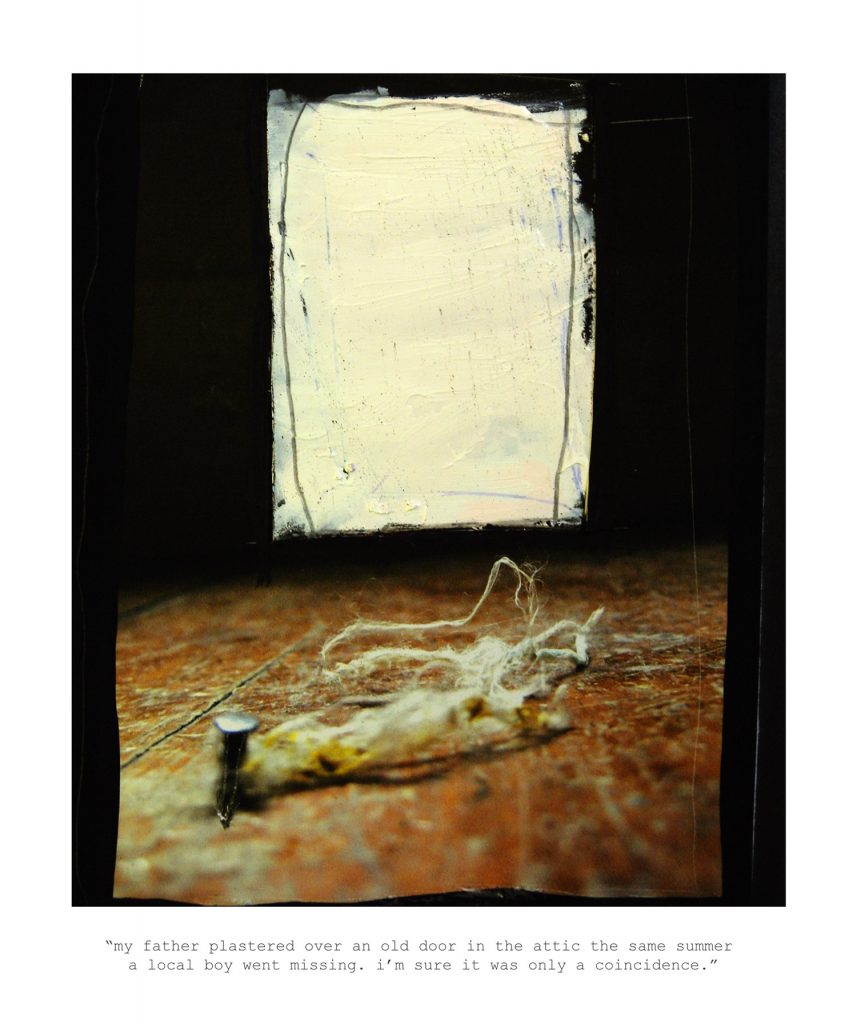
Gerald Slota | Home Sweet Home | 2010
October 30, 2023Gerald Slota | Home Sweet Home | 2010
(in collaboration with Neil LaBute)
Welcome to the midnight America, the one that exists parallel to the “real” world. It’s a dark country, one where men with hooks haunt Lover’s Lane and scarecrows walk on moonlit nights. It’s the place where people go when they slip into the cracks between light and darkness, a world of routewitches and oracles, demons and ambulomancers.
The rules are different here, and everyone’s playing for keeps. Be careful. Be cautious. And listen to the urban legends, because they may be the only things that can save you from the man who waits at the crossroads, hunting souls to keep himself alive.
Welcome to the ghostside.
Home Sweet Home is a collaboration between Gerald Slota and playwright Neil Labute. Introduced to each other in 2008, they began corresponding and working together (via email, for the most part, as they did not actually meet in person until – fittingly – an exhibition of this work in New York City in October 2010.) From the statement about Home Sweet Home : “For the first time Slota’s visual narratives are aligned alongside written narratives. The series title serves as an ironic reference to much of the early material’s dark focus on themes of home and family.”
The world that Slota and LaBute present us with is the descendant – a successor, in some ways – of the sites and landmarks from Michael Lesy’ The Wisconsin Death Trip. Denizens of a desperate world, sometimes leading lives of ‘quiet desperation’ (but not always, as secrets fester and explode, unable to be contained forever, just as some of the ‘narrators’ of these images must share what they have held inside….)
I also interpret these as postcards from the characters in Harmony Korine’s infamous film Gummo (1997) : a ‘loose narrative follows several main characters who find odd and destructive ways to pass time, interrupted by vignettes depicting other inhabitants of the town.’ That descriptor could apply to Home Sweet Home as well as Korine’s experimental film….
LaBute – whose words offer an unsettling nuance and depth to Slota’s images here – has also observed that “we humans are a fairly barbarous bunch”…..
This isn’t a new concept—the idea that stories change things, rewrite the past and rewrite reality at the same time…
The true secret of the palimpsest skin of America is that every place is different, and every place is the same. That’s the true secret of the entire world, I’d guess, but I don’t have access to the world. All I have is North America, where the coyotes sing the moon down every night, and the rattlesnakes whisper warnings through the canyons.
The true secret of the skin of America is that it’s barely covered by the legends and lies that it clothes itself in, sitting otherwise naked and exposed.
More of Gerald Slota’s work can be enjoyed here. Slota was also a recently featured Artist You Need To Know from AIH Studios’ continuing series : that can be enjoyed here.
All italicized quotes are from Seanan McGuire‘s books Sparrow Hill Road (2014) and Girl in the Green Silk Gown (2018) from her Ghost Road series. In these stories the urban legend of ‘Resurrection Mary‘ is told from the point of view of the dead girl Rose Marshall who’s been wandering the highways and back roads of a ‘secret’ United States of America since her death in 1952….
~ Bart Gazzola
Read More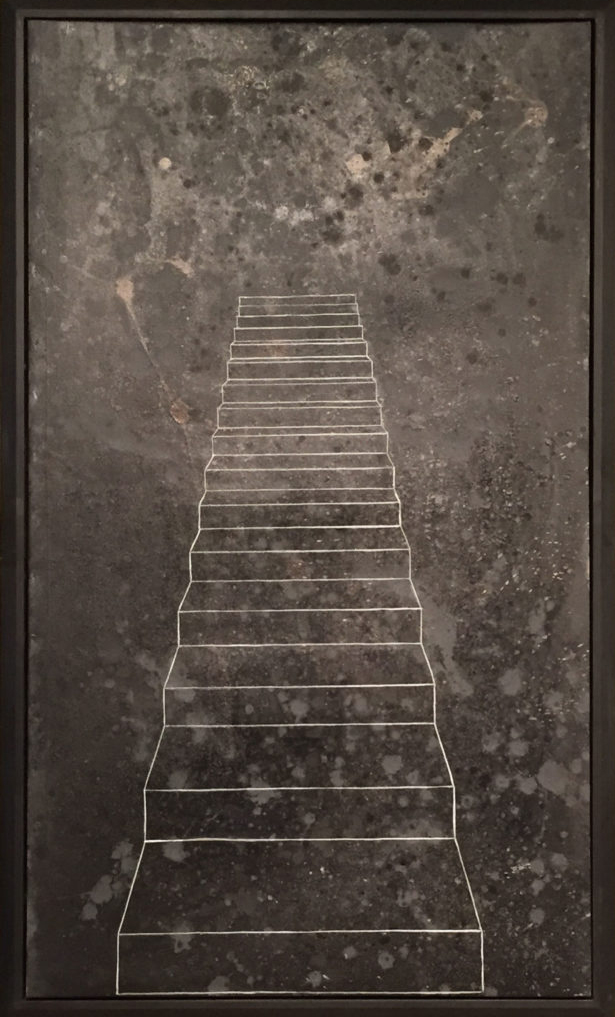
Ron Boaks | Stairway To The Heavens V | 2017
October 20, 2023Ron Boaks | Stairway To The Heavens V | 2017
There is a black which is old and a black which is fresh. Lustrous black and dull black, black in sunlight and black in shadow.
(Ad Reinhardt, from Art-as-art: The Selected Writings of Ad Reinhardt)
The dead cannot remember themselves; that’s why the living have to.
(Sarah Monette)
At the risk of getting too personal, too subjective, it’s often not a good experience to go to an art opening when you’re known in the community as an arts journalist. RM Vaughan has written about this, but there are – of course – exceptions to this rule, stepping outside the space where you have individuals attempting to bully and bleat or blow smoke up your ass, ahem.
When I was spending time in an exhibition of Ron Boaks’ painting a few years ago at a gallery in Niagara, an impromptu conversation with the artist became a high point of interaction and conversation about his work (and the larger milieu of artmaking, too).
At that time, Ron and I spoke about a body of work I colloquially refer to as the ‘Staircase’ series. These are (literally) darker works with an assortment of symbolic or metaphorical glyphs “scratched” and seemingly etched into and upon them : many of the pieces are defined by the recurring – but simple and perfect in execution – staircase. This offers an invitation to another site : not so much an ending as a transition to another place and sense of being.
Our conversation, at some point, touched upon how these were scenes Ron had created in response to the loss of loved ones : and I should clarify that they were dark in a formal sense but not in an experiential one. They had an element of hope, an injection of transcendence, perhaps, instead of a commentary on endings.
This painting that I’m featuring is from that exhibition and grouping of artworks : Boak’s Spirit Arise series.
Boaks’ words : “With this body of work, I am trying to capture “the lightness of being”, that essence of life, state of grace, of being alive right now. In 2013 two very dear people to me died. Awhile after their passing, I began to feel lighter in “spirit”, as, if they were now free, that it was OK for me to feel that too. This lightness is translated into these paintings as the energy or spirit entity, surrounded by rich colour. The paintings are grounded by the almost drafted line, measured, as it were, like distance markers on a map. X and Y coordinates are usually there, doubling as chromosomes. There are collaged bits, often as the pieces on each side edge that mark my boundaries. Balance and the interplay of opposites is as important as ever. Some of these paintings are serene and sublime while others are happy in their intensity or darkness. These are complex relationships made visible as simply as possible. These works need to be mulled over, absorbed and enjoyed.”
I would later visit Ron’s studio and we chatted about his work : I always love when artists trust me enough to invite me into their spaces, and I think that initial conversation had a role in that.
This is an image that offers a sense of what comes after death (and I say this as someone who is between an agnostic and an atheist, most days): but that which we leave behind us exists in a variety of forms, whether our experiences with others or the impressions we leave upon them, that inspire those whom remain to commemorate our passing.
Ronald Boaks’ career as an artist spans 30 + years. He has exhibited throughout Canada, the United States and the United Kingdom. His artwork has been widely collected and can be found in many public, corporate and private collections nationally and internationally.
More about his work can be seen here (Boaks was a previously featured Artist You Need To Know from AIH Studios’ continuing series) and at his site.
~ Bart Gazzola
Read More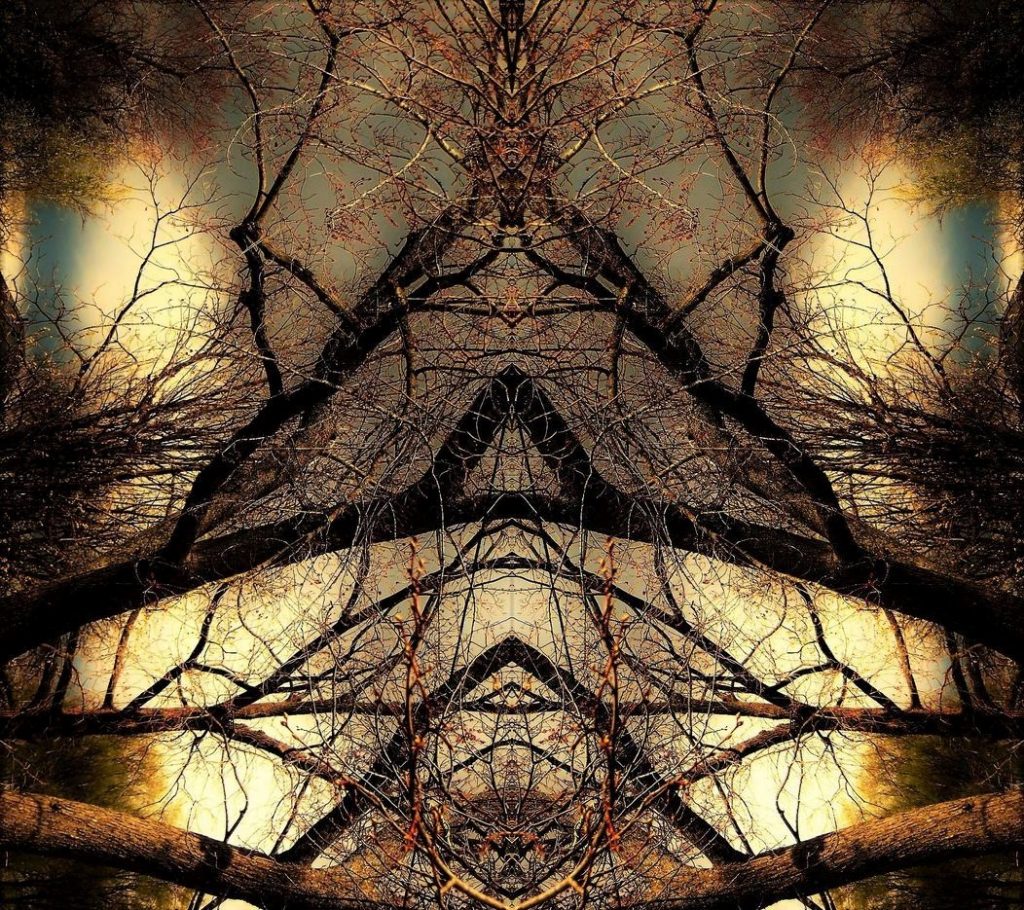
Diane Beard | Walking from the Darkness to the Light
October 2, 2023Diane Beard | Walking from the Darkness to the Light
“…life is brief and lovely, not long and foolish, that it is strange and beautiful, yeah as a dream, then so let it be, if it must be tears, if tears alone may serve…”
(Jack Kerouac)
Diane Beard is a photographer who takes pictures of her immediate community of Welland (usually while walking the streets of the city), often manipulating the images digitally to have a surreal or abstracted quality.
She was one of the featured artists in the Welland Creatives Network’ 13 on the 13th exhibition at the Welland Historical Museum in 2022. We became acquainted during COVID, when the artists’ group I facilitate – the 5 x 2 Visual Conversations – began to ‘meet’ online, and Beard was an enthusiastic and impressive participant.
Diane is the widow of artist Ross Beard (1953 – 2019) who was arguably the most significant visual artist in the history of the city of Welland. Frankly, I prefer to say ‘is’ as a recent exhibition of his work indicated that he lives on in his artwork and the joy many find within it.
His passing was – is – a fracture in her life, and part of her response has been the many images she’s produced and shared, both online and in the Niagara visual arts community.
From a recent exhibition – which was titled Walking from the Darkness to the Light – in St. Catharines : “Having been surrounded by Ross’s awe-inspiring art, sharing the same love of nature and appreciation for the Niagara area, driven by grief combined with a loss of identity after Ross’s passing, yet with no formal training, Diane began taking photographs as means to express her feelings and emotions. Diane’s sense of color and form transcends a simple mundane scene into something abstract and at times unrecognizable mimicking the profound change in her life.”
I’ve been lucky enough to talk with Diane often about her work. The contrast between a scene you recognize and something completely alien is one of the aspects of her work that’s alluring. Beard has an innate sense of colour, composition and a vibrancy in her scenes. This vivacity is an appropriate challenge to the fact that these images are, at their genesis, about loss and mourning and how to move through that….
Beard shares images regularly on social media, and is a prolific artist. I’ve only shared a small part of her body of work, and more can be enjoyed here and here.
~ Bart Gazzola
Read More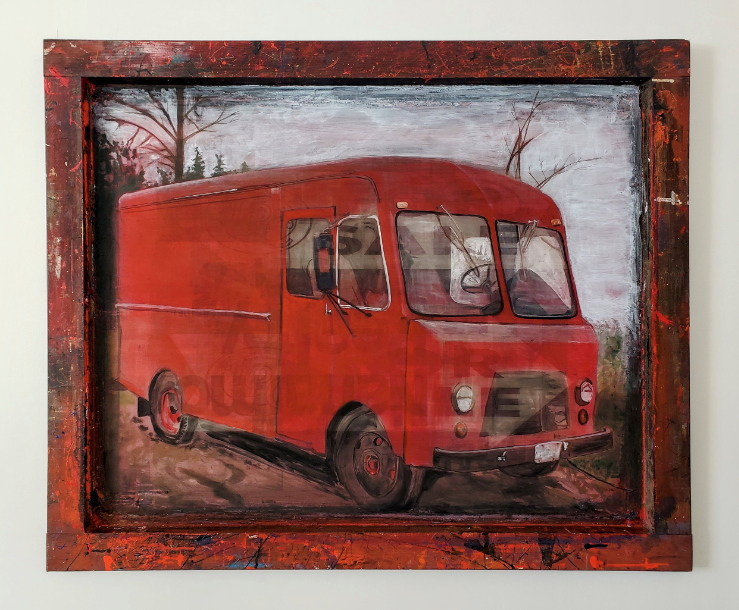
Tangible Stories | Leslie Love exhibition at The Old School House
September 27, 2023Tangible Stories | Leslie Love exhibition at The Old School House
I run a medium sized arts institution in a century old building, in the oldest postal code in Canada, in a sleepy town with one set of stoplights, where Leslie Weigand Love presents Tangible Stories, an exhibition that alchemizes grief.
With such a direct and forthright conversation about life, and all the characters that weave in and out of the artists narrative, Tangible Stories bring us a capacity to understand how we can move grief : that cheese-grater heart feeling – the learning of a self anew without that physical presence of one who has passed, by drawing close the echoes of community and intergenerationality. A show created in conjunction with her deceased father, Love shows us a knowing of proximity that moves beyond death while honouring mystical answers, and the work is a multilayer practice in salvaging of family objects, repositioning how we examine daily work, and reclaiming it with a fresh contemporary take on materiality.
The repeated sunflower theme throughout the exhibition, the artist’s sunny disposition, the acknowledgement that life is a circle with petals, not a half moon horizon. A full cycle of raising children as we are raising ourselves, and with the knowledge of family and what came before, using discarded old signs silkscreened by an uncle, as substrate for paintings based on her late fathers photographs.
Ripped up mechanical manuals become petals, paint made with metal fittings from his welding shop, a repurposed welding visor that contains images of his band, an inner/outer life many artists and creatives straddle. The work we do from our hearts welded to the work we do for a paycheck to feed and provide and clothe those we love.
Remnants of her family’s work jeans ripped and braided into a rug. The mythologies we ascribe to as families as we create from our familiar collective memory – what/how we remember as small eyes, looking up to characters and personalities our parents know. A troubled band mate asleep in the coat room after a big party, the first day of moving into a new home that directly echoes the age of Love’s child when she moved back to the property she grew up on- the exhibition unfolds in thematic ripples.
Gifting the viewer with a unique and familiar feeling, how perspective shifts with time and age and the acknowledgment of vulnerability, how the back of a van was used for childhood camping but also was housing a dream of touring with a band, imagery of her parents eyes directly across from a mirror that reflects the viewers own.
I suppose it all comes back to Love, how aptly named, to bring forth so much compassion of self, honour an alchemy of grief, to show us that we can process loss in the context of community and family. That the work of materiality and re-purposing vitality, allows objects to incarnate new meaning and purpose in a cohesive beautiful exhibition of work.
This exhibition runs until October 28th, 2023, and is viewable at The Old School House Arts Center, on the unceeded territories of the Qualicum First Nations.
https://www.theoldschoolhouse.org/2023-leslie-love
~ by Guest Curator Illana Hester

Snapshots – Emerging Artists in Waterloo
September 25, 2023This past summer, The COVERT Collective’s Waterloo contingent of curators (Mark Walton and Conan Stark) gathered a group of 3 young artists from Waterloo Region to put on an exhibition of their work. With assistance from The City of Waterloo and The Region of Waterloo Arts Fund, Snapshots was created from the combined works of Raha Rahman, Ernst, Rullmann and Daniel Burton, and hung at the city’s Visitor Information entre through the summer.
On Saturday September 23, 2023, the group’s work was shown in a large format video on the walls of The Clay and Glass Gallery in Uptown Waterloo, during the annual Lumen Festival. Over 40,000 were wandering through the streets that night… and this is what they saw…
Click HERE to see the video!
~ Mark Walton
Read More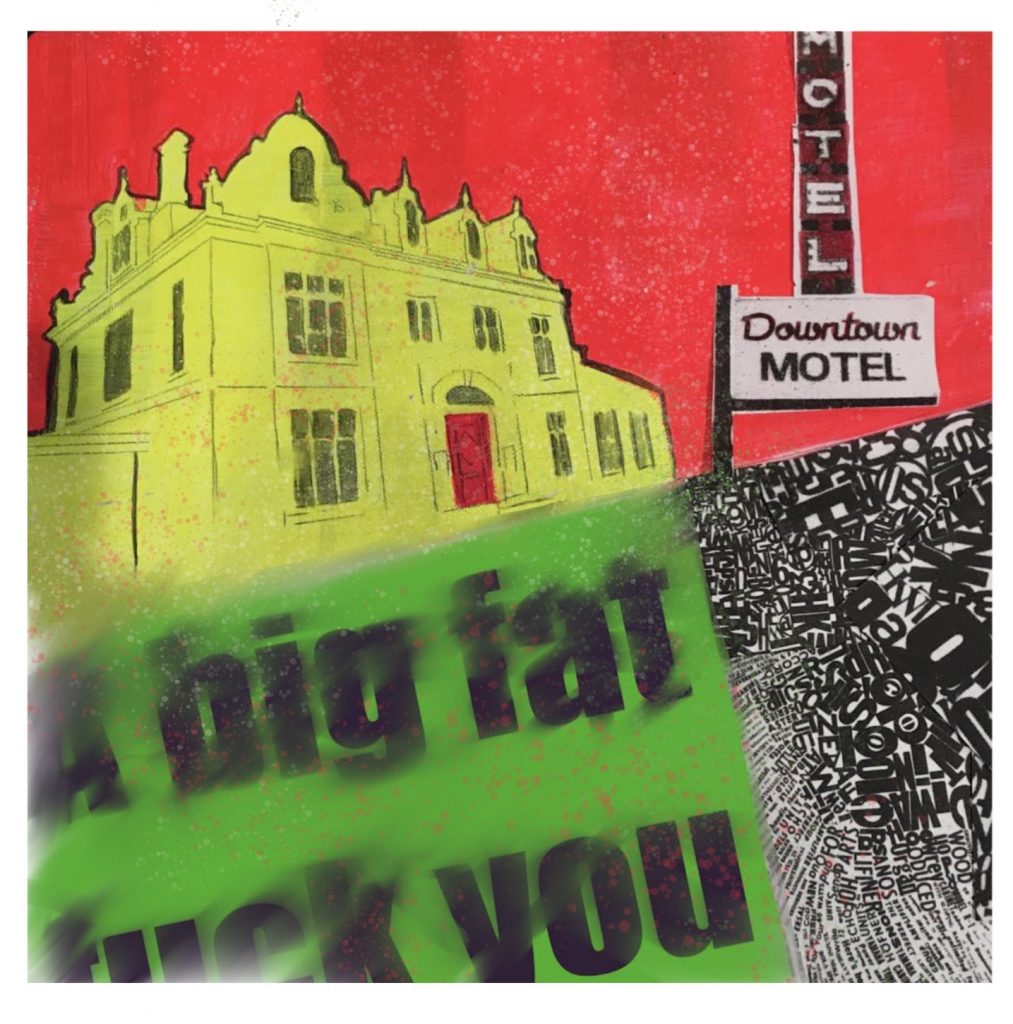
Liz Hayden | I dare you | 2022
September 24, 2023Liz Hayden | I dare you | 2022
“…the City’s refusal to support a public art gallery makes it’s endorsement of a heritage award a travesty.”
(Elizabeth Chitty)
A decade or so ago, I curated an exhibition from the archives of the now defunct (having merged into paved arts) Photographers Gallery in Saskatoon. On the accompanying panel (with artists Patrick Close, Sandra Semchuck and Doug Townsend, whom all had played seminal roles with the gallery as well as organizations like CARFAC and the Saskatchewan Arts Board) I made the observation that communities will create images of themselves that more accurately reflect the reality of the place, often when confronted with depictions that are not just disconnected from lived experience but in direct opposition to reality.
Liz Hayden’s image has been in my mind since she first shared it on social media some time ago : Hayden has been a vocal ally during the travails here in calling out the lies and self aggrandizing ignorance that has defined Brock University’s ‘demolition through neglect’ (to quote a past Cultural Coordinator for the city of St. Catharines) and sale of Rodman Hall Arts Centre, and the City of St. Catharines’ weathervaning between apathy and self congratulatory dishonesty.
The latest chapter in the travesty that is the City of St. Catharines’ apathy and ignorance – which has, in that manner I should know better by now, become even more egregiously foolish – was brought to my attention earlier this week. You can read more about that here. Essentially, the city council of St. Catharines – which I sometimes less than affectionately refer to as ‘North Welland’, to remind them that the delusion that STC is the ‘jewel’ of Niagara is a transparent lie to many of us in the cultural milieu – is seeking provincial heritage designation for the former gallery site, though it’s nothing more than a boutique hotel now, and all the things that made it an important site are now lost…
This is nothing more than STC Council giving an award to someone who has helped the local political cowards, miscreants, liars and ignorant incompetents NOT have to deal with the fact that the gallery may have been bulldozed and the subsequent critiques that would then expose their absence on the loss of the gallery and the harm this caused to the cultural community.
We used to have a nationally recognized and lauded art gallery, a centre for cultural and community oriented groups and now it’s just a ’boutique hotel’ and this merits recognition? This is an affront, especially considering the lackadaisical disinterest of the previous mayor and the inaction of many supposed ‘stakeholders.’
Did I mention that the city of St. Catharines has made some rumblings about wanting to have a ‘cultural renaissance’ in the city? Some things I cannot make up.
But now that I have set the stage with that intersecting rant, let us consider Liz Hayden’s artwork that speaks to these ideas. When we were speaking about it recently, she made the comment of ‘angry colours, wasted words.’
This work by Liz Hayden is titled I dare you : and I suspect that is a title that dares the viewer, but also those whom might be ‘offended’ by what the work states, to attempt to defend what has been allowed to happen, so their ignorance might be exposed. This is – like much of my writing and advocacy on the subject – perhps tilting at windmills : a recent ‘conversation’ on the Niagara History social media page was rife with people ‘excited’ at the new hotel, ignoring that access to the grounds would be limited, that a community focal point was gone, that citizens were irrelevant next to a few consumers and that this is a superficial facade that is a shoddy cover for what was an award winning artistic space that was deeply important to many.
These are some of the words that Hayden included to accompany another work in this series (which can be seen in the full post), but they are relevant here, as well :
Show me your garden and I shall tell you what you are. (Alfred Austin)
He is the gardener.
There at daybreak, he tills and waters: nurturing the plants, the community. Open-handed, he shares hard-gained knowledge and his harvest. Here is a place to heal, to grow. Free, in the air, without fear.
He is the gardener.
He walks the park, picking up.
Greets the old ladies, and their dogs, by name
A smile, the weather.
The garden is his purpose.
He toils there and grows
Himself and all of us
In that earth
This is one of a series of garden portraits I completed in 2022 focusing on gardens and gardeners here in St. Catharines, the Garden City. This acrylic on canvas portrays Richard Pierpont park, (previously known as Centennial Gardens) and Ross Hayden who has gardened there since the inception of those public gardens approximately 10 years ago.
A garden is a fine metaphor for a community : and there are many who are as insulted by the council’s proposal in terms of the loss of the green space as much as the artistic space. I will admit that I am also reminded of Oscar Wilde’s story about The Selfish Giant, but that one, at least, has a happy ending : but the giant had some introspection and that cannot be said for St. Catharine’s political ‘leaders’, on this front….
~ Bart Gazzola
Read More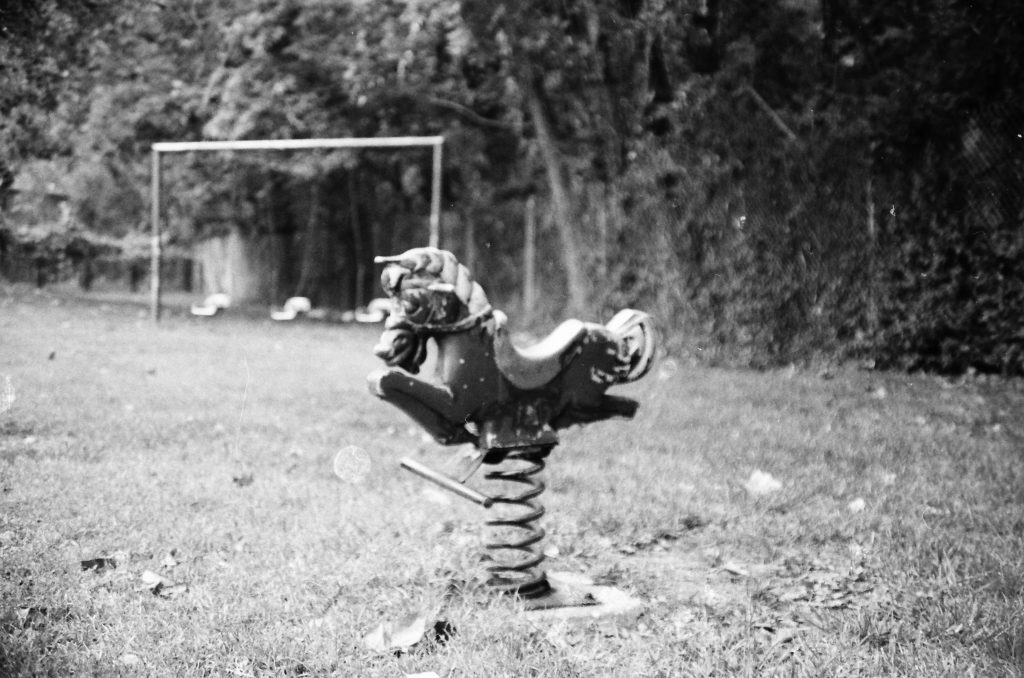
Chris Alic | Transience & Memory
September 16, 2023Chris Alic | Transience & Memory
One need not be a Chamber – to be Haunted –
One need not be a House –
The Brain has Corridors – surpassing
Material Place –
(Emily Dickinson)
The history of one who came too late
To the rooms of broken babies and their toys
Is all they talk about around here
And rebuke, did you think you’d be left out?
(Peter Straub, from Houses without Doors)
Like Mark Walton – and it’s a defining tenet of curated, I think – I also have a strong presence in my immediate and local visual arts community, with mine being Niagara : several of the artists I’ve featured here (Juliana D’Intino, for example, or Sandy Fairbairn) are ones that I’ve been lucky enough to include in a continuing curatorial project in downtown St. Catharines that began in Fall of 2022 and that is continuing indefinitely, with artists slated into late 2024.
Chris Alic is one of those artists, as her exhibition with Amber Lee Williams is currently on view at Mahtay Café & Lounge. That grew out of a 5 x 2 Visual Conversations evening (a relaxed sharing of art and ideas that I’ve facilitated for over five years, in St. Catharines and Welland). Like any good curator, I offered support to the two artists but primarily stayed out of the way, with some appropriate gentle nagging.
From that immediacy, let’s indulge some of my subjectivity that sparked my interest to consider these two pieces by Alic.
As the artist said when she spoke about the work, these are images from time she spent in Missouri in the United States – and, of late, I’ve fallen down another rabbit hole that centres upon the idea of the aesthetic of the Southern Gothic, whether that be in terms of crime or horror, but usually (and I own this) on the darker side. In light of this, the abandoned and lonely toys of Alic’s images take on a more ominous tone. Further clarification : I’ve been eschewing the ‘standard’ Southern Gothic horror of New Orleans, in my reading and research, but instead have been looking at other sites in the American South – like Charleston, or Alic’s Missouri – as these oft ignored sites have an unexplored richness in their stories that is more diverse than you might think. I also mention this – not just as another subjective indulgence – but because many of the stories I’m encountering in this enjoyable research are defined – or deformed – by the history of those sites (the institutional racism flows into the occult or supernatural horrors of the stories. There’s a story by Alan Moore about a television show that is shot on an old abandoned plantation where the filming somehow invokes the ghosts of the enslaved, and the actors ‘become’ their characters, with new manifestations of hate and racism being merged with old…all horror, they say, comes out of reality….or perhaps even the superficially banal, like Alic’s empty playground and abandoned tricycle….)
The words of the artist :
Memory is a huge part of what makes us human. Every interaction, every step, sight, sound, touch, smell – all these things create memory. But they are fragile. They are guided by perception, they are malleable, layered, are influenced by who we become, and who we become is in part made up of what we remember. Our memories continue to create us, and we create our memories. And we lose them. They fade, disintegrate, become suspect. They are subject to context, transformation and decay, and temporality, just like the spaces we inhabit and the things we use. They become the liminal space between an event and a feeling. Does emotion exist without memory?
I have been using a camera to secure my memories since I was a single-digit kid. I don’t remember ever not having a camera, or access to a camera. It was a part of my childhood, and everyone around me took photos and 8mm film of everyday life. My immediate and extended family were avid documentarians. I am continuing that tradition, but somewhere along the way I made the decision to “crop” those memories – to capture only small portions of context, little bits of an event, inexplicable to anyone but myself because each image is connected to an important moment, an emotion, a piece of who I became because of it. And then I edit. Adjust. Refine. Sometimes intentionally erase, fade, and transform them.
These seven images were made during a two-year period living in Columbia, Missouri. All were taken on a Yashica FX-70 Super 2000 film camera. I learned to use a darkroom and print my own photos with this film, and two of the images were only recently developed using caffenol-c. I had forgotten that I had taken the photos, I had forgotten the existence of the places until I saw them again.
The two person exhibition CHRIS ALIC & AMBER LEE WILLIAMS | TRANSIENCE OF MEMORY is on display at Mahtay Café & Lounge in downtown St. Catharines for the month of September, 2023.
~ Bart Gazzola
Read More
Recent Comments